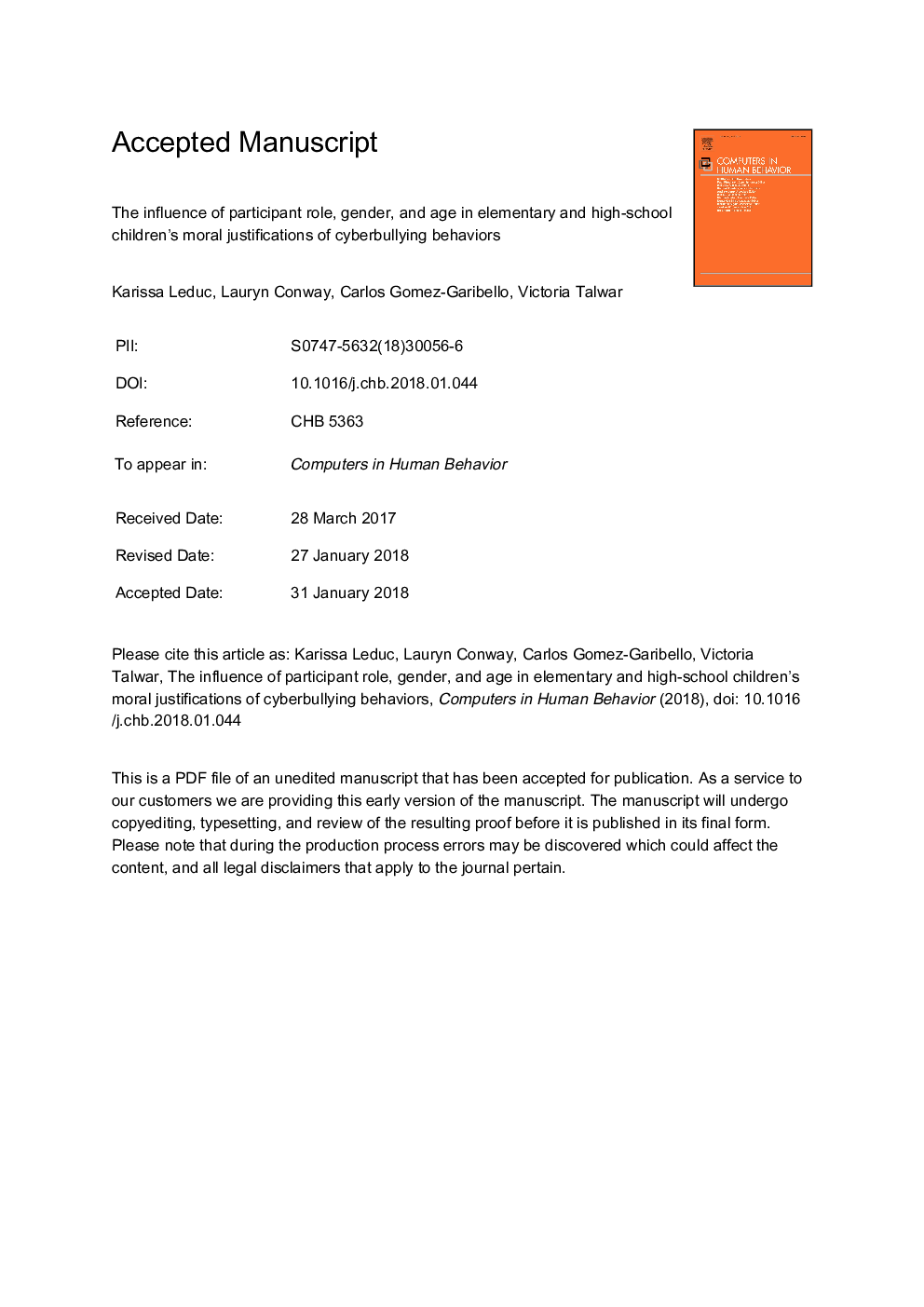| Article ID | Journal | Published Year | Pages | File Type |
|---|---|---|---|---|
| 6836116 | Computers in Human Behavior | 2018 | 27 Pages |
Abstract
The current study examined elementary and high school students' moral justifications of on-line aggression from the perspective of perpetrators and bystanders. Gender differences were also examined. Participants (Nâ¯=â¯100, 8-16 years old) read a series of stories depicting cyber-aggression. Participants were asked to justify either a perpetrator's or a bystander's behavior on-line. Based on Perren, Gutzwiller-Helfenfinger, Malti, & Hymel's model (2012), participants' justifications were coded according to 7 categories (i.e., reciprocity, moral rules, empathy, egocentric reasoning, deviant rules, lack of empathy and no moral stance) that were divided into 3 types of justifications (i.e., morally responsible, morally disengaged, and morally indifferent). Participants also completed a self-report measure on the frequency of their own experiences with cyber-aggression. Findings show that youth tend to use more morally responsible justifications when evaluating a perpetrator's behavior and morally disengaged justifications when judging a bystander's behavior.
Related Topics
Physical Sciences and Engineering
Computer Science
Computer Science Applications
Authors
Karissa Leduc, Lauryn Conway, Carlos Gomez-Garibello, Victoria Talwar,
